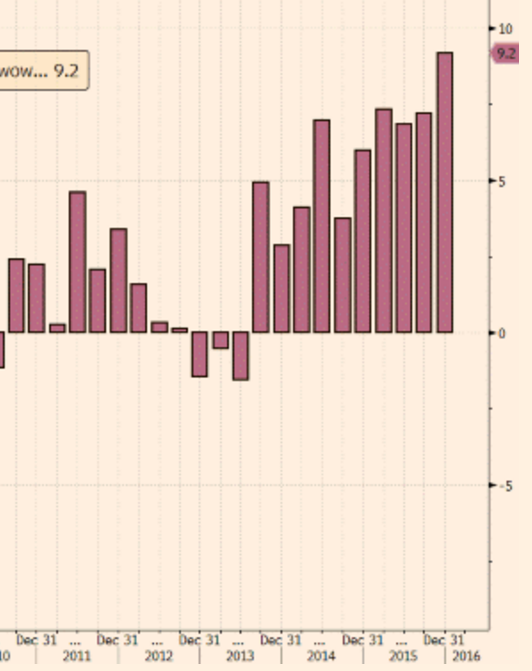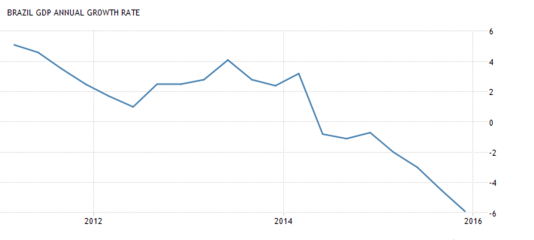Evan Soltas on fiscal policy in a recession
Vaidas Urba and Mark Sadowski directed me to an Evan Soltas post, discussing recent research on fiscal multipliers:
I have been doing some reading for my undergraduate thesis, which looks at the role of credit-supply shocks in the Spain during its housing boom and bust, and I came across some interesting thoughts from Bob Hall. Commenting on research by Alan Auerbach and Yuriy Gorodnichenko, Hall makes some useful points that contradict a lot of the received wisdom about the efficacy of fiscal policy:
I conclude that the chapter uncovers a proposition of great importance in macroeconomics—that the response to government purchases is substantially greater in weak economies than in strong ones. The finding is a true challenge to current thinking. The first thing to clear away is that the finding has little to do with the current thought that the multiplier is much higher when the interest rate is at its lower bound of zero…Standard macro models have labor and product supply functions that are close to linear over the range of activity in the OECD post-1960 sample. The simple idea that output and employment are constrained at full employment is not reflected in any modern model that I know of. [Bolding is by me, not Hall.]
On the economics blogosphere, the “current thought” is also that, because monetary policy is in certain respects (that is, if only by social convention) constrained when the policy rate hits zero, fiscal policy becomes discontinuously powerful at the zero lower bound. Once the policy rate is a quarter of a percentage point, time to turn off fiscal policy, one might infer. Scott Sumner is one of the clearest and most persuasive exponents of this view—see here, for instance.
I thank Evan for calling me “persuasive”, but there are days when I feel like I’m not making any headway. Just to reiterate, here are my basic views:
1. There is no such thing as “the” multiplier, in the sense of it being a deep parameter. It depends on how monetary policy responds. It’s an empirical question, and “the” multiplier may be time-varying.
2. If monetary policy is optimal, there will be no demand-side multiplier effects, even at the zero bound. (There may be supply-side effects.) When Evan refers to “this view”, he means that I don’t favor fiscal stimulus at positive rates, not that I do favor it at zero rates.
3. Previous studies suggesting a positive multiplier at the zero bound are marred by the inclusion of countries with and without monetary offset (with the eurozone being a particularly significant problem).
4. There was no fiscal multiplier effect when the Federal government suddenly reduced the deficit from $1060 billion in calendar 2012 to $560 billion in 2013, despite predictions to the contrary by over 350 Keynesian economists.
I took a look at the Alan Auerbach and Yuriy Gorodnichenko paper, as well as Robert Hall’s comments. I see two potential problems:
1. The empirical results seem quite weak to me, unless I’m missing something. Hall says:
Their point estimate is that one added dollar of government purchases results in about $3.50 of added GDP when the economy is weak, with a 90% confidence interval running from 0.6 to 6.3.
I’m very weak at econometrics, but this doesn’t seem at all persuasive to me. I’ve always thought the standard 95% confidence interval is way too lenient, and helps explain all the bogus studies that cannot be reproduced. It’s an invitation to data mining. So why did they use the 90% confidence interval, instead of the already lenient 95%? Perhaps because at 95% the interval would include zero. In other words there would appear to be no statistically significant evidence of any multiplier effect.
2. Let’s say I’m wrong about the econometrics (quite possible.) My other concern is that I don’t see any evidence that they discriminated between countries with and without independent monetary policies (no list of countries was included). In other words, they should have excluded countries under fixed exchange rate regimes, as well as those in a single currency like the eurozone. Studies by people like Mark Sadowski, Kevin Erdmann, and also Benn Steil and Dinah Walker, suggest that when the data is limited to countries with an independent monetary policy, then the multiplier effect seems to nearly vanish, at least during the recent recession.
I don’t want to sound too dogmatic here. I have no doubt that WWII military spending caused measured RGDP to rise (although consumption and living standards fell.) So it’s possible that this paper did correctly find a positive multiplier. But I am not convinced that the Auerbach/Gorodnichenko paper has established a positive multiplier for countries with independent monetary policy regimes.
As they say, “more research is needed.”



